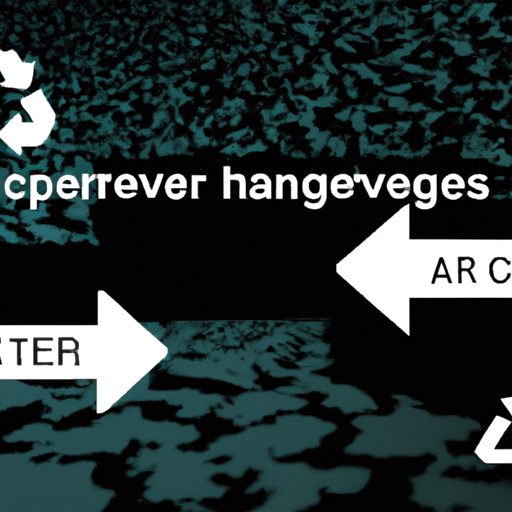Introduction
Climate change is a global phenomenon that has become increasingly urgent in recent years. The world is facing drastic changes in temperature, precipitation patterns, and sea levels due to human-induced greenhouse gas emissions. As such, many nations and international organizations have taken steps to reduce emissions and slow the rate of global warming. One way of doing this is through the use of technology.
The potential of technology to reverse climate change has been explored by scientists, technologists, and policy makers alike. This article will explore the current technological solutions to reverse climate change, and assess their feasibility and benefits. In addition, it will investigate the impact of smart technologies on reducing carbon emissions, and discuss the economic costs and social implications associated with technological solutions.

Exploring the Potential of Technological Solutions to Reverse Climate Change
As the effects of climate change become more severe, the need for innovative solutions to combat it has grown. Technological solutions to reversing climate change are becoming increasingly popular, as they offer a way to address the issue without relying solely on government regulation or international agreements.
In order to assess the feasibility of reversing climate change through technology, it is important to consider both the potential benefits and challenges of such solutions. On the one hand, technological solutions can provide a cost-effective and efficient way to reduce emissions and mitigate the effects of climate change. For example, renewable energy sources such as solar and wind power can be used to generate electricity without emitting greenhouse gases into the atmosphere. Smart technologies such as artificial intelligence (AI) can also be used to monitor and control energy usage, helping to reduce overall emissions.
On the other hand, technological solutions to reversing climate change come with certain risks and challenges. For example, renewable energy sources require significant investments in infrastructure and may not always be able to meet the demand for electricity. Additionally, AI-enabled systems can be vulnerable to cyberattacks, which could result in the disruption of energy supplies. Furthermore, there is the risk that technological solutions may be too expensive for poorer countries, further exacerbating existing inequalities.

Investigating the Impact of Smart Technologies on Reducing Carbon Emissions
In order to effectively combat climate change, it is essential to reduce the amount of carbon dioxide (CO2) emissions. Smart technologies can play a major role in achieving this goal, as they can be used to monitor and control energy usage more efficiently. For example, AI-enabled systems can be used to predict energy demand and adjust supply accordingly, helping to reduce overall emissions.
In addition, clean energy sources such as solar and wind power can help to reduce CO2 emissions. These renewable energy sources are becoming increasingly affordable, and can provide a reliable source of electricity without releasing harmful pollutants into the atmosphere. Furthermore, advancements in battery technology have enabled the storage of excess energy generated from renewable sources, allowing for a more consistent supply of electricity.
Discussing the Benefits and Drawbacks of Using Technology to Reverse Climate Change
Using technology to reverse climate change can offer numerous benefits, but there are also some drawbacks that must be considered. On the one hand, technological solutions can provide an effective and cost-efficient way to reduce emissions and mitigate the effects of climate change. Additionally, they can help to create jobs and stimulate economic growth, as new technologies and infrastructure require investments.
On the other hand, technological solutions can be expensive and may not be accessible to all countries. Furthermore, they can cause disruption in existing energy markets and may lead to higher prices for consumers. Additionally, there is the potential risk of cyberattacks, which could disrupt energy supplies and lead to further environmental damage.
Conclusion
Technology offers a promising solution for reversing climate change, but it is not a panacea. In order to effectively combat climate change, it is essential to assess the potential benefits and drawbacks of technological solutions. Clean energy sources such as solar and wind power can provide a reliable source of electricity without releasing harmful pollutants into the atmosphere. Additionally, smart technologies such as AI can be used to monitor and control energy usage, helping to reduce overall emissions. However, technological solutions can be expensive and may not be accessible to all countries. Therefore, further research is needed to ensure that technological solutions are implemented in a manner that is equitable and sustainable.
(Note: Is this article not meeting your expectations? Do you have knowledge or insights to share? Unlock new opportunities and expand your reach by joining our authors team. Click Registration to join us and share your expertise with our readers.)
